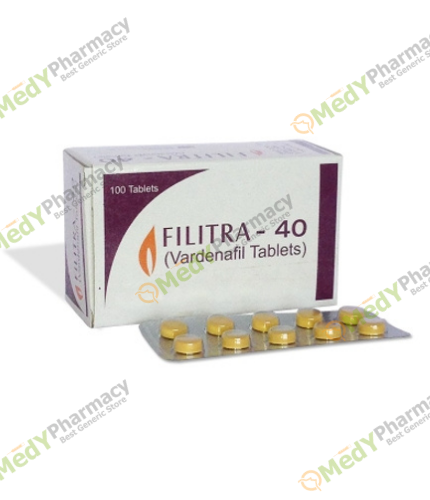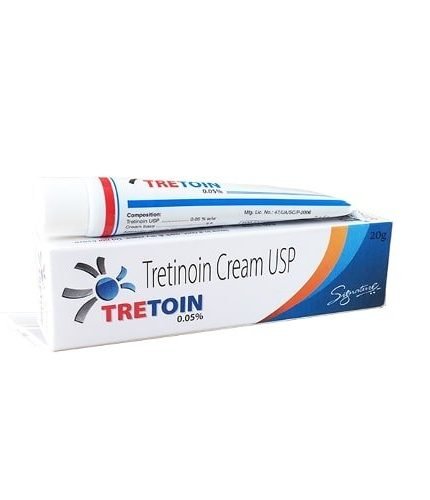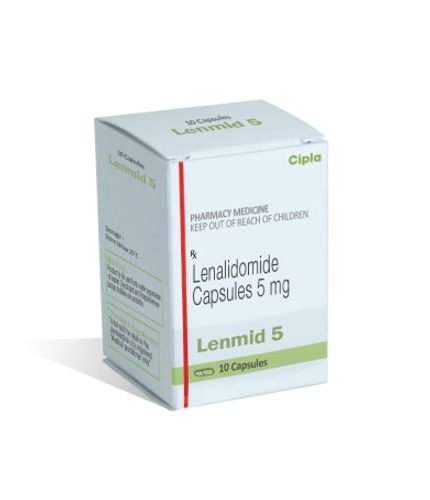Introduction:
Summer is a season that most of us look forward to, thanks to its warm weather and chances for outdoor activities. However, the hot and humid weather creates an excellent environment for fungal infections to grow, particularly on our skin.
Fungal diseases like athlete’s foot, jock itch, and ringworm can be bothersome and ugly. To assist you have a worry-free summer, we’ll go over how to manage fungal infections during the summer. Concentrating on skincare techniques and preventative strategies that are simple to learn and apply.
Because of its warm and damp environment, the groin area is prone to fungal infections, particularly during the summer months. Jock itch, commonly known as tinea curries, is a fungal condition that affects only the groin area. This infection can cause further pain, itching, and inflammation. Manage these infections successfully to keep your skin healthy and well-balanced.
Understanding Fungal Infections
Fungal infections can be caused by a variety of fungi, the most common being dermatophytes and yeasts.
These fungi prefer warm, moist settings, which are exactly what the summer season delivers.
When they infect the skin, they can cause a variety of disorders including athlete’s foot, jock itch, ringworm, and yeast infections.
These infections frequently cause symptoms such as redness, itching, scaling, and, in the case of ringworm, a unique ring-shaped rash.
To effectively manage and prevent fungal infections, it is critical to detect early warning symptoms and get an appropriate diagnosis and treatment plan from a healthcare professional.
During the summer, tourists are frequently exposed to a variety of conditions that can raise the risk of fungal infections. Long-term travel, prolonged heat exposure, tight clothing, and heavy perspiration can all contribute to moisture buildup in sweat-prone areas, resulting in fungal development and common skin disorders including jock itch, ringworm, athlete’s foot, and yeast infections.
Most of these are characterized by symptoms such as redness, itching, burning sensations, and the presence of a rash or raised lumps on the skin. These symptoms can be unpleasant and irritating, affecting the entire travel experience and enjoyment of the trip.
Identifying a Fungal Infection: What Symptoms Do Fungal Infections Present?
These are a diverse group of molds and yeasts that can infect your skin and nails. They primarily reside in the top layer of your skin, where they cause a range of problems, including:
- Athletes’ feet
- Ringworm
- Itchy sock
- A fungal infection of the beard.
- Fungal infection of the nails.
Fungal skin infections often produce a red, scaly, and itchy rash. Tinea versicolor is a form of fungal skin infection that changes skin pigmentation, resulting in lighter or darker spots. If you get toenail fungus, the nail will thicken, darken, and become brittle.
Antifungal drugs that are available over the counter can be used to treat a fungal infection. However, many of our patients require prescription-strength drugs or alternative treatments, such as laser therapy, to address their fungal infections.
Yeast Infection
Candida overgrowth affects the vagina’s regular bacterial and yeast balance. Antibiotics, stress, hormonal imbalances, or bad eating habits, among other factors, might cause a bacterial imbalance.
These are also known to cause fungal toenail infections and diaper rashes.
- Symptoms of Yeast Infection
A yeast infection is often the source of fungal toenail infections.
Symptoms may include vaginal itching, swelling, burning, and pain during urine or intercourse.
Symptoms may include vaginal redness and pain, as well as atypical discharge, such as gray clumps or watery discharge.
In rare circumstances, a rash may appear gradually. Yeast infections should be treated as soon as possible because if left untreated, the symptoms can worsen.
- Diagnosis, treatment, and prevention
This is easily diagnosed due to its basic symptoms. Doctors may inquire about the patient’s medical history, including any past yeast infections or sexually transmitted infections (STIs). They may also inquire whether the person has recently taken antibiotics.
Doctors will then check the vaginal walls and cervix for evidence of infection, extracting cells from the vagina if necessary for accurate diagnosis.
The treatment of yeast infections is determined by their severity. Creams, pills, and suppositories are common treatments that are accessible via prescription, over-the-counter, or online. Sophisticated infections may necessitate sophisticated therapies.
A well-balanced diet and adequate cleanliness are essential for avoiding yeast infections. Washing underwear in hot water and replacing feminine products frequently can also help avoid fungal growth.
Risk factors of fungal infections
These are frequent in people and are usually not severe if treated promptly and effectively.
Anyone with a weaker immune system, as well as those using antibiotics, may be more susceptible to fungal infection.
Cancer treatment and diabetes may also make a person more susceptible to fungal infections.
Tips for Preventing Fungal Infections While Traveling
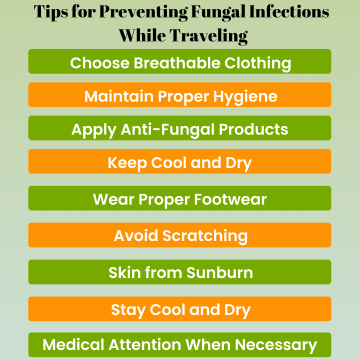
- Choose Breathable Clothing
Tight clothing might increase the likelihood of fungal infections. As a result, it is best to choose lightweight, breathable clothing that allows for air circulation and prevents fungal growth.
The clothing you wear throughout the summer might dramatically increase your chance of contracting fungal infections. Choose natural and breathable textiles such as cotton and linen. These materials allow air to flow and keep your skin dry.
Synthetic textiles, such as polyester, can trap heat and moisture near your skin, producing an ideal environment for fungi to thrive.
Consider loose-fitting garments to reduce friction and improve air circulation. When you wear tight, non-breathable clothes, such as slim jeans or leggings, the increased friction and lack of airflow might heighten your risk of fungal infections.
- Maintain Proper Hygiene
Travelers, in particular, should exercise proper hygiene by washing daily and changing into clean, dry clothing after swimming or engaging in physical activity. Keeping the body dry aids in preventing fungal growth.
Maintaining proper hygiene is an important part of preventing fungal diseases. Wash your hands and feet regularly using a mild soap and warm water. Make sure to clean thoroughly, paying special attention to areas where fungi develop, such as the webbing between your toes and skin wrinkles.
Avoid sharing personal goods such as towels, razors, and nail clippers because this increases the risk of fungal infections spreading from one person to another. Although it may appear innocent, sharing these objects might result in cross-contamination and the spread of fungi. Stick to your hygiene things to keep yourself and others safe.
- Apply Anti-Fungal Products
To avoid and treat fungal infections, incorporate anti-fungal products into your vacation skincare routine. Heat Powder, L Cream, and Clotrimazole Cream are all helpful ways to manage fungal infections and relieve symptoms. Pack these items in your travel bag to have them on hand as needed.
Antifungal powders are a useful tool for avoiding and treating fungal infections during the summer. These powders usually contain active chemicals like miconazole or clotrimazole, which serve to suppress the growth of fungi. Applying antifungal powder to sweaty and moisture-prone regions, such as your feet, creates an unfavorable environment for fungal development.
Remember to reapply the powder as needed, particularly after sweaty activities. Antifungal powders are also available in sprayable form for extra convenience. These might be especially useful while you are on the run.
- Keep Cool and Dry
Take breaks during lengthy exertion to allow your skin to breathe and cool down. Avoid sitting in damp clothing or swimwear for long periods since it creates a moist atmosphere conducive to fungal growth.
During the summer, your body’s natural response to heat is to sweat, which might leave you exposed to fungal infections. Sweating produces moisture, which fungi love, and when combined with the warmth of the season, it creates an excellent breeding environment.
That’s why it’s critical to shower frequently and completely dry your skin, especially in places prone to fungal infections such as between your toes, beneath your breasts, in the crotch, and under your arms.
After you’ve showered, gently pat your skin dry. Rubbing your skin forcefully can cause irritation and small tears, making it easier for fungi to penetrate and infect your skin. Using a soft, clean towel is best.
- Wear Proper Footwear
Your footwear choice is crucial for preventing fungal infections, especially on your feet. Open-toed sandals or shoes made of breathable fabrics are ideal for the summer. These alternatives allow your feet to breathe and keep dry, which reduces the likelihood of fungal infections.
When you do activities that cause your feet to sweat, such as exercising or spending long amounts of time in hot, humid conditions, you must change your socks and shoes on a frequent basis. Sweaty, wet conditions within your shoes provide a breeding habitat for fungi, therefore keeping your feet dry is critical for prevention.
- Avoid Scratching
Fungal infections can be extremely irritating, and the desire to scratch can be intense. However, scratching can exacerbate the infection and transmit it to other places in your body. To alleviate irritation, use an over-the-counter antifungal lotion or ointment as directed by your physician. If the itching continues, see a doctor for further therapy.
- Skin from Sunburn
While keeping your skin clean and dry is key, so is protecting it from sunburn, which can weaken your skin’s natural defenses and make it more vulnerable to fungal infections. To protect your skin from damaging UV rays, use sunscreen with an appropriate SPF and reapply it throughout the day, especially if swimming or sweating.
- Stay Cool and Dry
Keeping cool and dry is critical during the summer. Avoid spending long periods in sweaty or damp clothing. As soon as you’ve finished swimming, change into dry clothes. If you sweat easily, use moisture-wicking textiles in your clothing to stay comfortable and dry.
- Medical Attention When Necessary
Fungal infections can last for a long time or worsen, necessitating medical treatment. If over-the-counter medications do not improve your condition, you should see a doctor. They can prescribe stronger antifungal drugs or offer other treatment choices.
Treatment of Fungal Infections Using Products
The Candid Cream products are efficient and successful treatment options for fungal infections. The company provides a variety of treatments that are specifically developed to cure fungal infections and alleviate symptoms.
The heat helps to cool and defend against germs. It helps to kill heat-causing microorganisms, inhibits itching and skin irritation, absorbs excess moisture, soothes sensitive skin, and lowers the risk of fungal infections.
It effectively treats fungal infections and keeps them from recurring. It can be used to treat infections including athlete’s foot, ringworm, and thrush, as well as dry, flaky skin. Clotrimazole Cream, which contains clotrimazole, is used to treat yeast infections of the vagina, skin, and ringworms. This cream also helps to prevent fungal infections from recurring.
It is especially useful for treating jock itch and yeast infections, reducing irritation and inflammation.
Incorporating items into your skincare routine can effectively manage fungal infections, resulting in a relaxing and worry-free summer vacation.
How Does A Fungal Illness Spread?
Do not wait and see when it comes to treating a fungal infection. Here is why: Fungal infections have the potential to spread widely.
Except for tinea versicolor, most of these are very infectious. Infection spreads through contact with the fungus. The infection can spread from one area of your body to another, as well as to other people.
How to avoid fungal infections
To avoid fungal infections, avoid the conditions that allow the fungus to grow. Take these actions to avoid fungal infections:
There is fungus everywhere. You cannot avoid it, but you can remove the warm, moist, and gloomy atmosphere that promotes fungal growth.
Pay attention to your socks and shoes to avoid getting athlete’s foot. Wear absorbent socks and change your socks regularly. After a bath or shower, dry your feet and the area between your toes.
Avoid wearing tight shoes and synthetic materials that retain moisture, such as vinyl and rubber. It’s also beneficial to have several pairs of shoes so you may switch them up instead of wearing the same pair every day. This allows each pair to fully dry before being worn again.
Wash your hands to avoid transmitting the infection from one part of your body to another. Do not share towels or clothing since the fungus can spread. Also, be meticulous when cleaning towels, sheets, and garments.
These are common in those who perspire heavily and in skin folds, which provide the ideal warm, wet, and dark environment. The best remedy is to wash and dry your body regularly, change your clothes to stay dry, and use an antifungal powder.
Overweight people are more susceptible to fungal infections. Women with huge breasts may develop the problem in the creases of the breasts. Men should also use caution around their groin area.
Home Treatments for Fungal Infections
Several home treatments may help treat fungal infections. It’s crucial to remember that, while home cures can help with minor instances or as a supplement to conventional treatment, severe or chronic infections may necessitate professional medical attention.
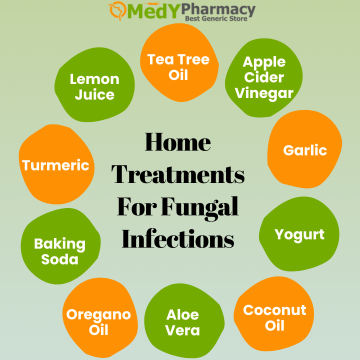
- Tea Tree Oil
Tea tree oil, which is known to have antifungal effects, can be diluted with carrier oil and administered directly to the afflicted area.
Some people may have skin irritation or allergic reactions when using tea tree oil. Always do a patch test before making substantial use of it.
- Apple Cider Vinegar
Diluted apple cider vinegar can be used to treat athlete’s foot or as a topical treatment for fungal skin infections.
When not properly diluted, apple cider vinegar is extremely acidic and can cause skin burns. Skin irritability, burning, and dryness.
- Garlic
Garlic contains naturally occurring antifungal effects. Crush a few garlic cloves and apply the paste to the afflicted area.
Applying garlic directly to the skin can cause burns and irritation, especially if left on for an extended amount of time.
- Yogurt
Yogurt high in probiotics can help encourage the growth of good bacteria and combat fungal infections.
Ensure that the yogurt is plain and has live active cultures. Flavored or sweetened yogurt may exacerbate the illness.
Although generally safe for intake and topical use, caution should be exercised if allergic.
- Coconut Oil
Applying coconut oil to the afflicted area can help alleviate itching and irritation caused by fungal infections.
Before you apply it widely, run a patch test first. Mild allergic symptoms include itching and redness.
- Aloe Vera
Aloe Vera gel can soothe and hydrate the skin, helping it heal from fungal infections.
Use pure aloe Vera gel with no additives or fragrances. Some commercial goods may contain skin irritants. Skin irritation or allergic responses are rare but can occur.
- Oregano Oil
Oregano oil contains antifungal properties. It should be diluted with a carrier oil before being applied topically.
Oregano oil is extremely strong and should always be diluted with a carrier oil. Direct application might cause skin burns.
- Baking Soda
Baking soda placed on shoes or socks can keep the feet dry and reduce moisture, preventing fungal diseases.
Excessive use of baking soda can cause skin dryness.
- Turmeric
Turmeric contains antifungal compounds. Make a paste from turmeric and water and apply it to the affected region.
Turmeric can cause skin and clothing stains. Make sure it’s completely rinsed off.
- Lemon Juice
Lemon juices acidity may aid in inhibiting fungal growth. Apply fresh lemon juice to the afflicted area.
This is quite acidic and can sting, especially on injured skin.
Remember to conduct a patch test before employing any new therapy to rule out allergic reactions or skin sensitivities. If the infection worsens or persists, or if you have any underlying health concerns, you must see a doctor for a proper diagnosis and treatment. Furthermore, proper cleanliness practices and avoiding factors that promote fungal growth can assist in preventing future infections.
Preventive Measures to Avoid Fungal Infection
Wash your skin with mild soap and water frequently, especially in sweaty areas, and dry yourself thoroughly, particularly between skin folds and toes, where moisture can gather.
Choose loose-fitting, breathable textiles like cotton to promote air circulation and decrease moisture buildup on the skin.
To avoid the spread of fungal diseases, do not share towels, clothing, or personal grooming equipment with others.
To limit the risk of contracting fungal infections, use protective footwear in communal spaces such as gym showers and swimming pools.
Seek Medical Attention If Necessary
If you have a fungal infection, you should seek medical attention right once. Your doctor can advise you on the best way to get the illness under control.
Follow these simple tips to protect your skin from fungal diseases and have a worry-free summer. Remember that prevention is vital, so take care of your skin, keep it dry, and stay healthy.
Lifestyle Management of Fungal Infections
By taking particular steps, you can not only relieve symptoms but also improve your immune system to resist fungal infections.
- To avoid fungal growth, keep the afflicted area clean and dry.
- Follow your healthcare provider’s instructions while applying antifungal creams or powders.
- Change moist or sweaty clothes right away, especially after exercise or other sweat-inducing activities.
- To reduce the risk of infection, do not share personal belongings such as towels, shirts, or shoes.
- Consume a nutritionally balanced diet rich in vitamins A, C, and E, as well as selenium and zinc.
Sugary meals and refined carbs should be avoided since they weaken the immune system and promote fungal growth.
Regularly clean and disinfect your environment
Fungi can live on surfaces and clothing. Cleaning and disinfecting your home’s surfaces regularly, as well as wearing clean clothes and using clean towels and pillow coverings, can all help avoid fungal infections.
Gender and lifestyle vertical catering to women of all ages, helping them stay current, on-trend, and aware. We designed this poll to improve our performance and better understand the interests of our users.
Why Doesn’t My Fungal Illness Go Away?
Personal habits: Wash your sweaty gym clothes, caps, and socks with hot water, antibacterial solutions, and detergent. The survival of fungus spores in clothing may result in reinfection. If your dermatologist has prescribed antiperspirant sprays and powders, use them.
Failure to use personal protective equipment: Using sterile and disposable gloves while digging, gardening, and dipping hands in water, as well as masks when working in a high-spore area, may help to avoid unwanted spore exposure.
Undiagnosed health issues: If you have recurring fungal infections on your skin, examine your sugar and thyroid levels. If you have a family history of cancer, you may need to undergo further cancer screening.
These are a typical summer concern, but with good skincare and prevention techniques, you may manage and even avoid them. Remember to keep your skin dry, wear breathable clothing, and apply antifungal powders to make the environment unfriendly to fungi.
Good cleanliness, suitable footwear, and sunburn protection can all help to keep your skin healthy and clear of fungal infections. Follow these simple tips for treating fungal infections and keeping your skin healthy to have a comfortable and infection-free summer.
We can effectively manage fungal infections and promote Medypharmacy by combining the power of home remedies with expert advice.




















